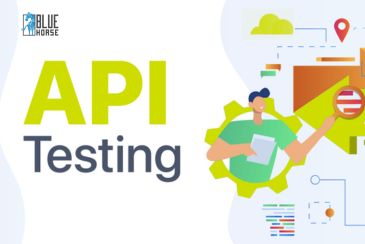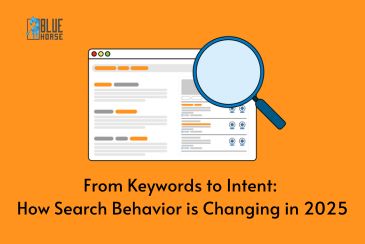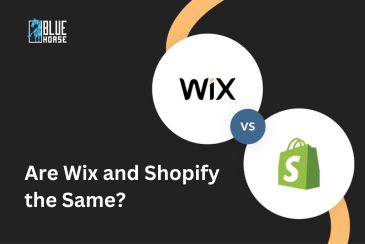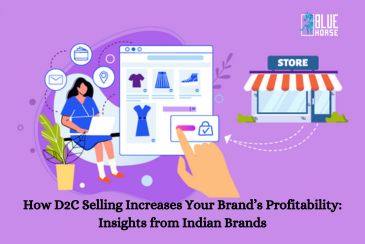How D2C Selling Can Help You Build a Sustainable, Scalable Business in 2025
The business landscape is rapidly evolving, and as we approach 2025, one of the most transformative models emerging is Direct-to-Consumer (D2C) selling. This business model allows companies to bypass traditional retail channels and sell their products directly to consumers, typically through online platforms like websites and mobile applications. As businesses look for strategies to build a sustainable and scalable future, D2C selling offers a promising solution to achieving these goals.
In this blog, we will explore how D2C selling can contribute to building a sustainable and scalable business in 2025. We will delve into the core benefits of the model, including operational efficiency, customer-centricity, leveraging data, and global scalability. By the end of this post, you'll understand why D2C is set to play a crucial role in the future of business growth.
1. D2C and Sustainability: Building Long-Term Growth
Sustainability in business refers not only to environmental responsibility but also to practices that ensure long-term operational stability and success. The D2C model directly supports sustainable growth in multiple ways:
Reduced Operational Complexity
One of the most significant advantages of D2C selling is the simplification of the supply chain. Traditional retail models require multiple intermediaries, such as wholesalers, distributors, and retailers. Each layer adds complexity and costs to the process. In a D2C model, businesses sell directly to customers, eliminating these intermediaries and streamlining operations. This reduces the need for complex logistics and supply chain management, resulting in lower costs, faster delivery times, and less waste.
By reducing reliance on third parties, D2C brands can maintain greater control over the production process and distribution, making their operations more efficient and cost-effective. This leads to more sustainable business practices as resources are used more effectively, and environmental impacts are minimized.
Lower Environmental Impact
The D2C model can also reduce the carbon footprint associated with traditional retail. By eliminating multiple layers of the supply chain, businesses can streamline their logistics, which often leads to fewer shipments and optimized delivery routes. Additionally, brands that sell directly to consumers have the opportunity to adopt more sustainable practices in packaging, such as using recycled materials or minimizing plastic waste.
Furthermore, D2C brands are often more agile in responding to consumer demand. This means they can produce only what is needed, minimizing overproduction and waste. The ability to more accurately forecast demand and optimize inventory levels is a significant step toward more sustainable business operations.
Customer Loyalty and Retention
A sustainable business is one that retains its customers over the long term. With D2C selling, brands can build stronger relationships with their customers. By interacting directly with consumers, businesses can gather valuable insights into customer preferences, pain points, and feedback. This direct communication fosters loyalty, as customers feel more connected to the brand and are more likely to continue purchasing from it.
Strong customer loyalty is one of the cornerstones of sustainable growth. By focusing on customer satisfaction and retention, D2C brands can create a steady stream of revenue, which is more reliable and less affected by market fluctuations than relying solely on new customer acquisition.
2. Scalability in the D2C Model: Expanding with Efficiency
As businesses look to scale, they must ensure their growth is both manageable and profitable. The D2C model enables scalability by offering several key advantages that support rapid expansion without compromising operational efficiency.
Lower Overheads
One of the primary ways D2C brands can scale quickly is by eliminating the overhead costs associated with traditional retail operations. Physical stores, third-party retailers, and distributors all require significant investments in infrastructure, staff, and inventory management. With D2C selling, businesses can bypass these costs, allowing them to reinvest more of their profits into scaling their operations.
This reduction in overheads means that businesses can allocate more resources toward marketing, technology, product development, and customer service—all crucial areas for supporting growth. Lower costs also make it easier for brands to remain competitive while scaling.
Global Reach
D2C businesses are not limited by geographical boundaries. Traditional retail models require significant investment in physical locations and distribution networks, which can be expensive and time-consuming to set up in international markets. However, D2C brands have the advantage of selling online, which allows them to reach global customers without the need for physical stores or local intermediaries.
With the increasing prevalence of e-commerce platforms and global shipping solutions, D2C brands can expand into new markets quickly and efficiently. Whether it’s through their own website or online marketplaces, D2C businesses have the opportunity to tap into international demand without the logistical challenges of a traditional retail model.
Technology-Driven Scalability
Another critical factor in the scalability of D2C businesses is the ability to leverage technology. From advanced data analytics to automation and artificial intelligence, D2C brands can scale their operations more efficiently through technological tools. These technologies help optimize inventory management, streamline marketing efforts, and automate customer service, freeing up valuable time and resources for other growth initiatives.
For example, artificial intelligence can be used to personalize customer experiences, recommend products, and predict demand, all of which contribute to more efficient scaling. Similarly, automation tools can handle repetitive tasks such as order processing and customer communication, allowing businesses to focus on high-impact areas like product development and customer engagement.
3. Customer-Centricity: The Foundation of Long-Term Success
In the D2C model, businesses have a unique opportunity to place the customer at the center of their operations. Direct interactions with consumers enable brands to gather real-time feedback, personalize experiences, and refine their offerings based on customer needs and preferences. This customer-centric approach is essential for building a sustainable and scalable business.
Personalized Experience
D2C brands can leverage customer data to create personalized experiences that resonate with their audience. By understanding customer preferences and behaviors, businesses can tailor their marketing campaigns, product offerings, and user experience to meet individual needs. This level of personalization is difficult to achieve through traditional retail models, where brands rely on intermediaries to communicate with customers.
Personalized experiences not only increase customer satisfaction but also improve the likelihood of repeat purchases, which is vital for long-term growth. By offering a tailored experience, D2C brands can create stronger emotional connections with customers, fostering loyalty and increasing the lifetime value of each consumer.
Building Trust and Transparency
Trust is essential for sustainable business growth, and D2C brands have the advantage of building trust directly with their customers. By providing transparency in product sourcing, pricing, and company values, D2C brands can establish a reputation for honesty and integrity. Transparency builds confidence in the brand and encourages customers to continue purchasing from the company.
Additionally, D2C businesses can more easily address customer concerns and complaints, providing faster and more effective solutions. This level of responsiveness enhances the overall customer experience and contributes to long-term loyalty.
Customer Retention and Lifetime Value
In the D2C model, retaining customers is often more cost-effective than acquiring new ones. By nurturing existing relationships and focusing on customer satisfaction, D2C brands can maximize the lifetime value of each customer. This approach ensures that businesses have a reliable revenue stream, even as they scale.
Customer retention is achieved through ongoing engagement, offering loyalty programs, and consistently delivering high-quality products and services. By focusing on retention, D2C brands can reduce the need for aggressive marketing spend, which is a major advantage in sustaining profitability over time.
4. Leveraging Data for Smarter Decision Making
One of the most powerful aspects of the D2C model is the direct access to customer data. Unlike traditional retail models, where businesses rely on third-party retailers for insights into customer behavior, D2C brands can collect and analyze data in real time. This data-driven approach enables businesses to make smarter decisions about their operations, marketing, and product development.
Customer Insights
Data analytics allow D2C brands to gain deep insights into customer preferences, purchasing behavior, and demographic information. By understanding these patterns, businesses can optimize their product offerings, pricing strategies, and marketing efforts to better meet customer needs.
For example, data can help businesses identify trends in product demand, allowing them to adjust inventory levels and avoid overproduction. It can also provide insights into customer pain points, which can inform product improvements or new features.
Marketing Optimization
D2C brands can use data to refine their marketing strategies and create more targeted campaigns. Through segmentation, brands can divide their audience into specific groups based on interests, behaviors, or demographics, and tailor their marketing messages accordingly. This targeted approach leads to higher conversion rates and more efficient use of marketing budgets.
Additionally, data can be used to optimize advertising spend, ensuring that resources are allocated to the most effective channels and strategies. By continually analyzing marketing performance, D2C brands can refine their campaigns for maximum impact.
Product Development and Innovation
Access to customer feedback and data allows D2C brands to stay ahead of market trends and develop products that meet the evolving needs of their audience. By constantly analyzing customer reviews, preferences, and buying behavior, businesses can identify gaps in the market and create innovative solutions to address them.
This data-driven approach to product development ensures that businesses are always in tune with their customers’ needs, giving them a competitive edge in the market.
Conclusion
As we move into 2025, the D2C selling model offers businesses a sustainable and scalable path to growth. By reducing operational complexity, minimizing environmental impact, and fostering strong customer relationships, D2C brands can create a business that is both profitable and resilient. The ability to scale globally, leverage technology, and make data-driven decisions further enhances the potential for success in this model. In an increasingly competitive business environment, the D2C model provides a robust foundation for long-term success. Brands that embrace D2C selling will be well-positioned to thrive in the coming years, building sustainable businesses that can adapt to changing market conditions and continue to grow in a rapidly evolving landscape





















Comments